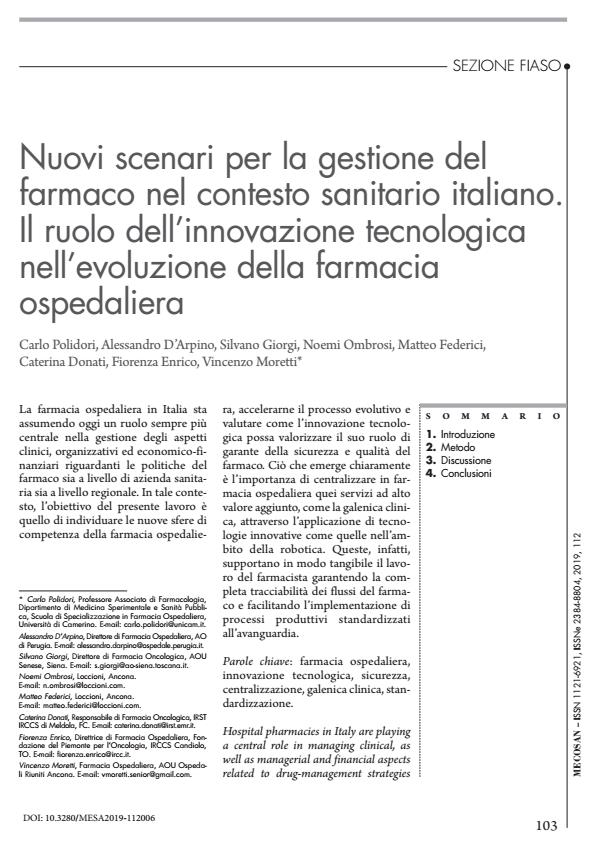Nuovi scenari per la gestione del farmaco nel contesto sanitario italiano. Il ruolo dell’innovazione tecnologica nell’evoluzione della farmacia ospedaliera
Journal title MECOSAN
Author/s Carlo Polidori, Alessandro D’Arpino, Silvano Giorgi, Noemi Ombrosi, Matteo Federici, Caterina Donati, Fiorenza Enrico, Vincenzo Moretti
Publishing Year 2020 Issue 2019/112
Language Italian Pages 10 P. 103-112 File size 266 KB
DOI 10.3280/MESA2019-112006
DOI is like a bar code for intellectual property: to have more infomation
click here
Below, you can see the article first page
If you want to buy this article in PDF format, you can do it, following the instructions to buy download credits

FrancoAngeli is member of Publishers International Linking Association, Inc (PILA), a not-for-profit association which run the CrossRef service enabling links to and from online scholarly content.
Hospital pharmacies in Italy are playing a central role in managing clinical, as well as managerial and financial aspects related to drug-management strategies applied both within the organization and at the regional level. In this scenario, the present paper aims at identifying the new areas of competence of the hospital pharmacy, fastening its evolution process, and evaluating how technological innovation can support pharmacists to ensure high-quality medicines. What clearly results is the importance of centralizing and increasing the high-value tasks within the hospital pharmacy settings - such as those connected to intravenous compounding - through the implementation of innovative technologies, e.g. robotics solutions. Indeed, they can guarantee higher safety and traceability levels of drug flows, as well as improve efficiency through best practices and process standardization.
Keywords: Hospital pharmacy, technological innovation, safety, centralization, intravenous compounding, standardization
Carlo Polidori, Alessandro D’Arpino, Silvano Giorgi, Noemi Ombrosi, Matteo Federici, Caterina Donati, Fiorenza Enrico, Vincenzo Moretti, Nuovi scenari per la gestione del farmaco nel contesto sanitario italiano. Il ruolo dell’innovazione tecnologica nell’evoluzione della farmacia ospedaliera in "MECOSAN" 112/2019, pp 103-112, DOI: 10.3280/MESA2019-112006